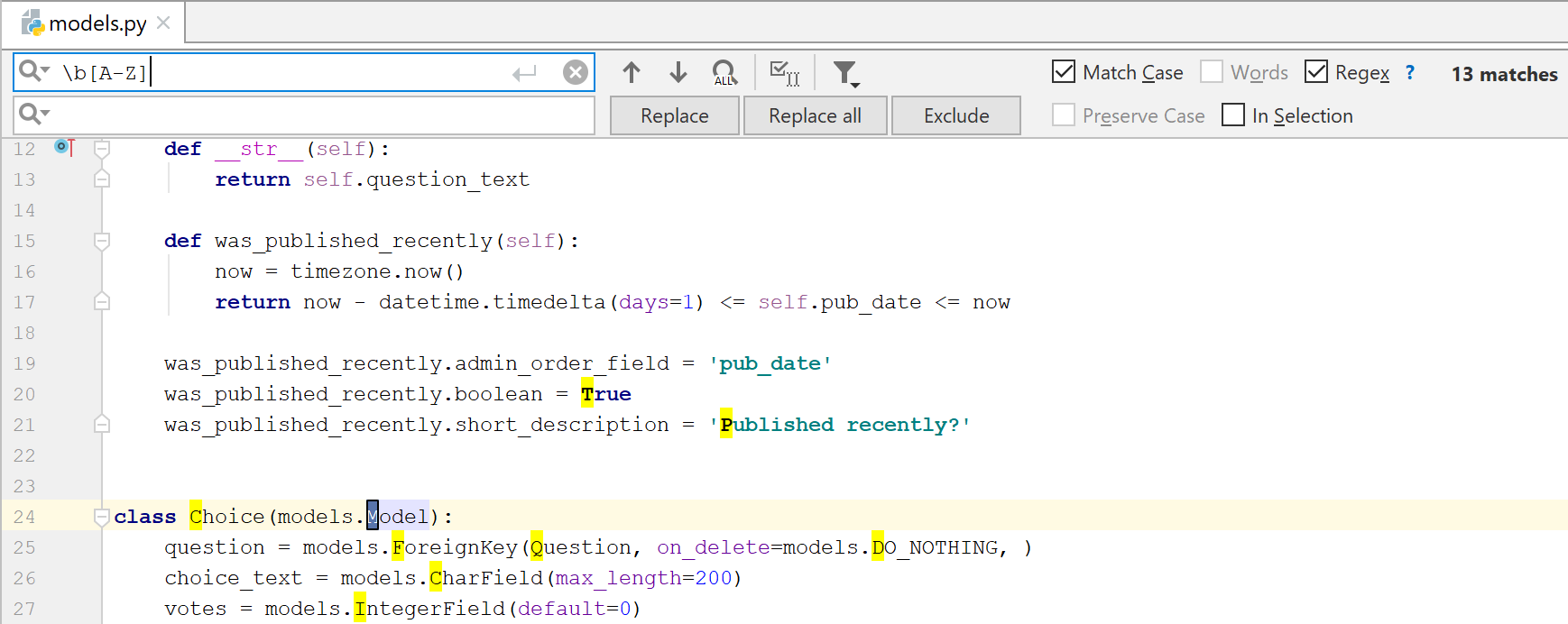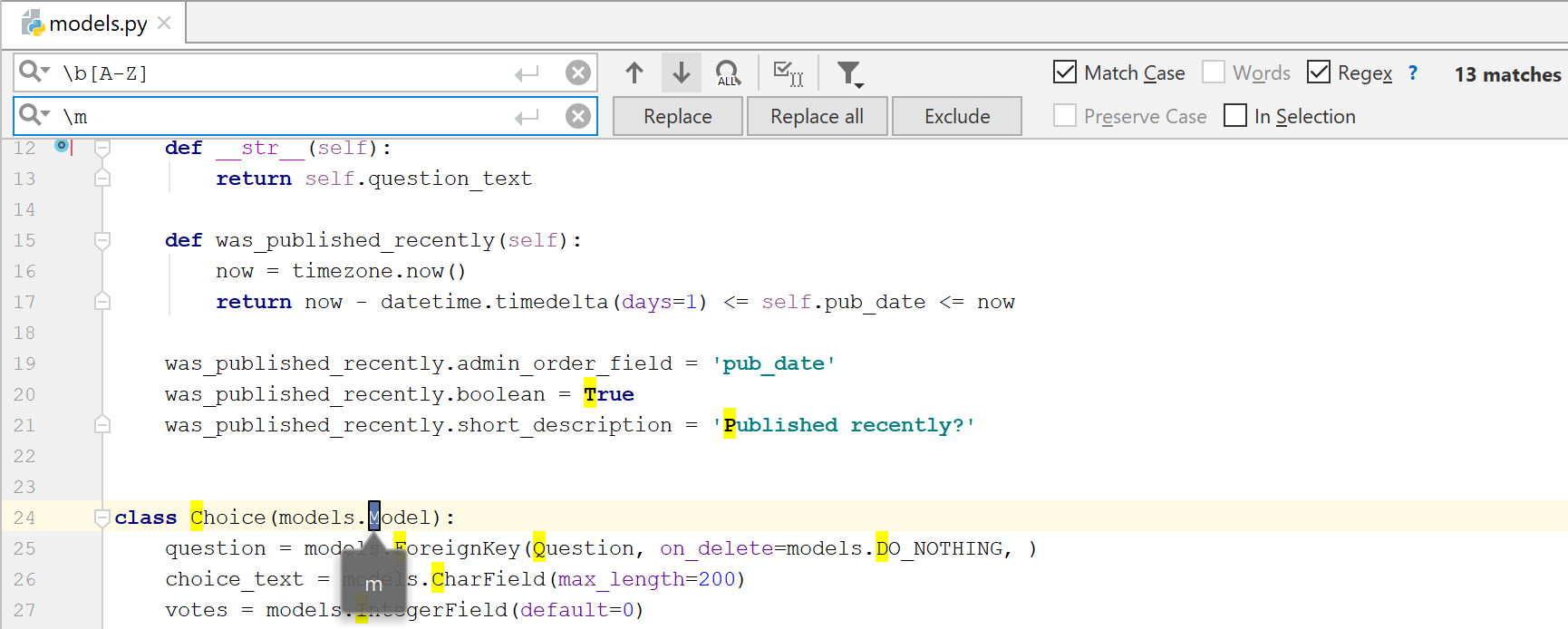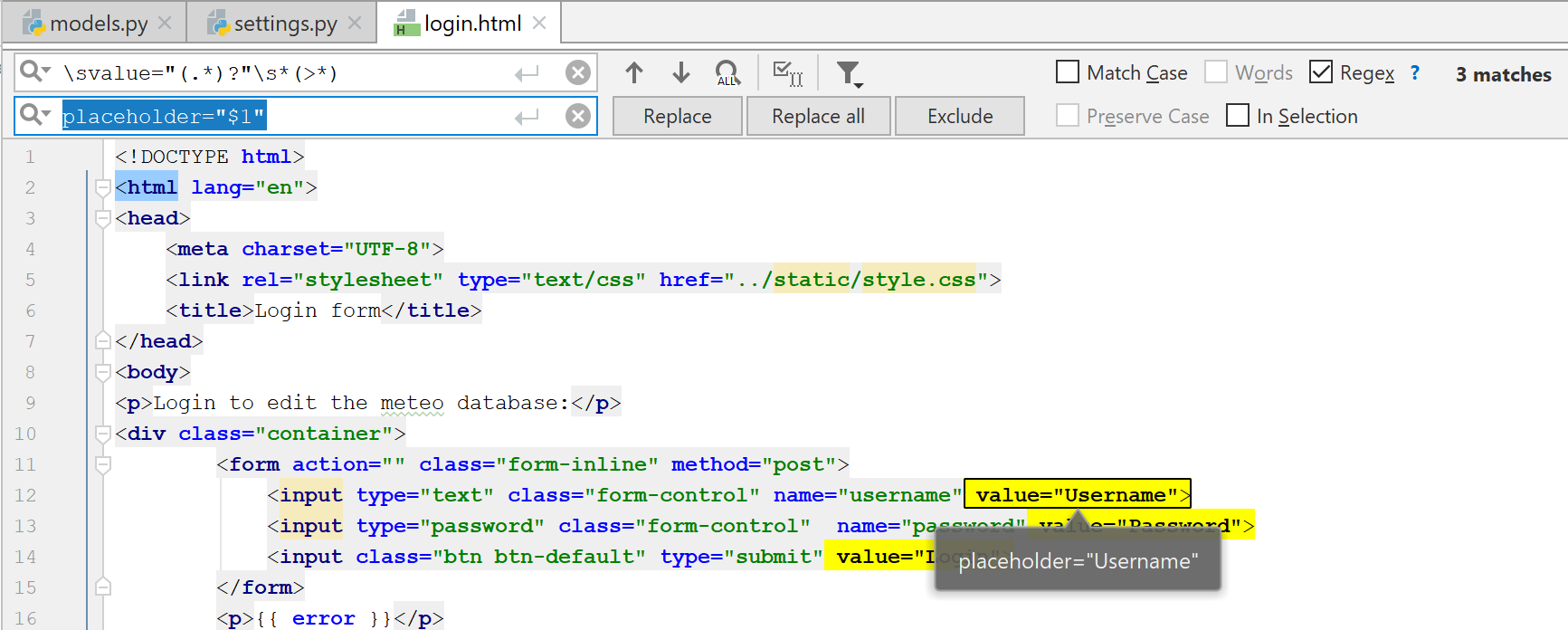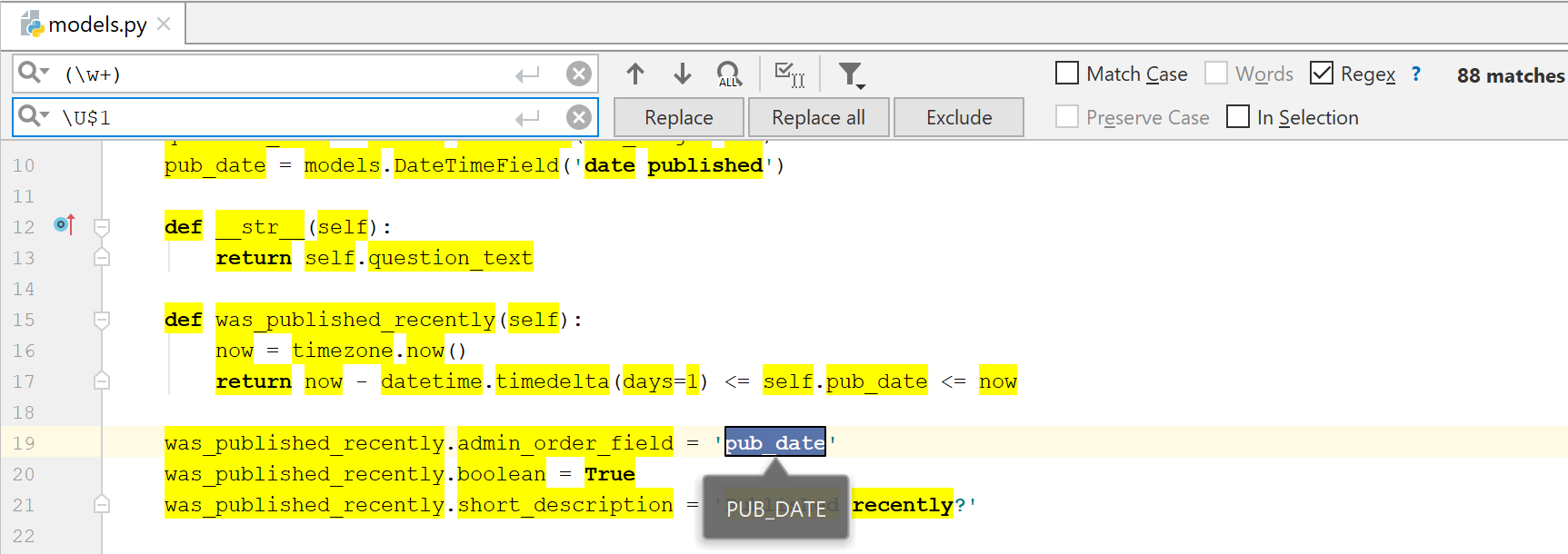Find and replace a string using regular expressions
When you want to search and replace specific patterns of text, use regular expressions. They can help you in pattern matching, parsing, filtering of results, and so on. Once you learn the regex syntax, you can use it for almost any language.
Press Ctrl+R to open the search and replace pane.
Select the Regex checkbox to enable the regex syntax. If you need to check the regex syntax reference, click the question mark next to the Regex.
-
Enter a search string in the top field and a replace string in the bottom field.

-
When you search for metacharacters such as
.[{()\^$|?*+, you need to escape them with backslash (\) so they can be recognized.For example, if you need to find
., type\.in the search field. -
PyCharm Edu can also match a letter case when you enter a range of characters in your search field.
For example, if you want to search for only uppercase characters, type the following in the search field:
\b[A-Z] If the Match Case checkbox is cleared, PyCharm Edu searches for both lower and upper cases. Select the Match Case checkbox to match the case of the specified range.

When you browse the occurrences, PyCharm Edu displays the replacement hints so you can view the potential results before clicking the Replace button.

Use regex capturing groups and backreferences
You can put the regular expressions inside brackets in order to group them. Each group has a number starting with 1 so you can refer to (backreference) them in your replace pattern. Note that the group 0 refers to the entire regular expression.
Let's consider the following code:
Open the search and replace pane (Ctrl+R).
In the search field, enter parentheses
()that would indicate a capturing group, for example:\svalue="(.*)?"\s*(>*)In the replace field, backreference such groups by numbers starting with 1, for example:
placeholder="$1"PyCharm Edu highlights the found occurrences based on your search specifications and displays hints with the replace string.

Switch the character case
You can use regular expressions to change the case of characters that matches some criteria.
Open the search and replace pane (Ctrl+R). Make sure that the Regex checkbox is selected.
In the search field enter the search pattern.
-
In the replace field, depending on what you want to achieve, enter one of the following syntax:
\lchanges a character to lowercase until the next character in the string.
For example,Barbecomesbar.\uchanges a character to uppercase until the next character in the string.
For example,barbecomesBar.\Lchanges characters to lowercase until the end of the literal string (\E).
For example,BARbecomesbar.\Uchanges characters to uppercase until the end of the literal string (\E).
For example,barbecomesBAR.

Refer to the RegEx syntax reference table for more details.
The following XML code fragment is used as an example for this tutorial.
Find and replace a string
Suppose you want to replace an attribute within an element (title) with an expanded tag <title></title>, which contains some arbitrary string in double-quotes within.
This is how it's done.
With the XML file opened in the editor, press Ctrl+R. The Replace pane appears on top of the editor.
Since you want to replace all the
titleattributes, regardless of the actual strings contained therein, use regular expressions. Make sure that the checkbox Regex is selected. Thus, everything you type in the Search and Replace fields will be perceived as the regular expressions.In the Search field, start typing a regular expression that describes all
titleattributes.\stitle="(.*)?"\s*(/>*)Note that though the regular expression\stitle=".*?"\s*[/>]*matches contents of thetitleattribute, it is recommended to capture the groups for referencing them in the Replace field.
Then, in the Replace field, type the following regular expression:
$2<title>$1</title>where$1refers to the first capture group and$2refers to the second capture group.Click Replace, or Replace All.